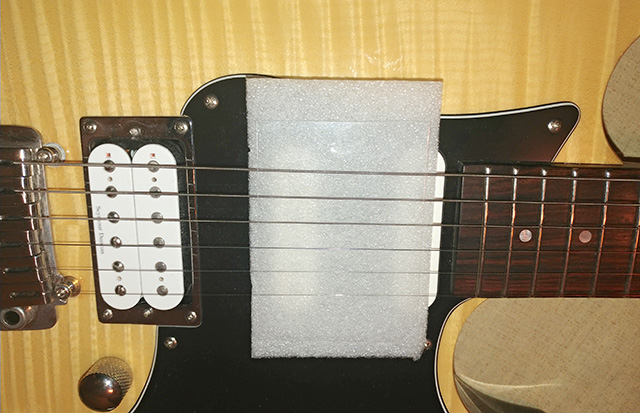First, let me just say that Cracking the Code has already done wonders for my technique – so much so that I’m hesitant to write a post like this. That said, and like many others here, I’ve struggled to get my double escape motions happening. Troy and team have done an amazing job explaining how it all works, but absent an in-person instructor, I’m finding it a challenge to correctly apply the guidance. I’m a digital UX designer by trade and no more than a tinkerer on the mechanical side of things, but we must have some mechanical engineers out there in the CTC community who may be able to design/model some kind of apparatus that would limit the wrist to 902 (for supinators) and 1003 (for pronators) movements. I have a 3d printer and would love to collaborate on prototyping/testing something like this if there’s any interest.
Not a device, but I came up with this and has helped a ton:
It would be really cool to have a guide to follow like in the usx and dsx sections of the primer.
I really struggle with dbx, haven’t been able to get it going at all, so I’ve abandoned practicing it, for now at least.
This is really cool – I’ll give them a shot tonight and see if it help with double escapes. Thanks for the link!
This reminds me of the trend of mechanical devices in the 19th century that limited the range of motion of the fingers for the dubious purpose of “developing finger strength and independence”, but mostly were torture devices that actually crippled their users. Notably, Robert Schumann lost the use of his left hand through using such a device, and was unable to pursue a career as a pianist.

The image caught my eye before your post text. “Torture device” was the first thing that came to my mind too lol!
I remember hearing about this in college (I was a music composition major). Certainly a cautionary tale!
Same here. It’s funny how life works out though. Other than hobby type stuff I don’t get to use my degree at all  But oh well. At least I can articulate exactly why I enjoy Tchaikovsky so much
But oh well. At least I can articulate exactly why I enjoy Tchaikovsky so much 
Yep, I used to do some composing for fun years ago (film score kind of music), but no relation to my current job either. Guess I should be playing classical guitar to make use of all the voice leading studying I did in college.
Not a composition major but music certainly. Went to Berklee, now I work in Bio/Pharma.
Very cool! I think every aspiring shredder in the 80s/90s dreamed of going to Berklee. I’m pretty much as far from music as you can get as well, a UX designer working in aerospace. (My wife’s actually in Bio/Pharma, too).
It’s funny, I was thinking about posting a topic about a “device” I recently “invented” to help me develop a proper DSX motion when I saw this topic 
Here’s how it looks.

The piece of plastic sheet is inserted between the strings so that only one string (the 3rd at the moment) goes over, while the rest of strings are covered. And the piece of foam behind the strings helps to keep the plastic in place and, in the same time, works as a damper decreasing sound the piece of plastic produces during tremolo-picking the available string. (It clicks awfully loud.)
I’m yet to see if this thing is really helpful in developing picking skills. So far, it lets me achieve fast tremolo-picking tempos in order to try different hand positions and pick grips and find which is the most efficient for me. I couldn’t get to high enough tempos without it because I’m absolute beginner and my right hand can’t keep the same pick depth which totally ruins the smoothness of motion.
Last but not least, the idea to limit picking depth by putting something behind the strings is not mine, I’ve seen it in one of Troy’s videos for which I’m very grateful.
In case someone is interested, I’m testing an updated version of the “training device”. Two foam wedges are inserted between plastic sheet and strings it covers (above and below the exposed string). This bends the plastic and makes the trajectory of a pick closer to the “DBX escape curve”.
This is incredibly creative – looking forward to seeing a video of it in use!
I’ve come to believe that many of the “exercises” that are taught for guitar with the same stated goals, have only the same practical functions as those machines.
Here you are 
The tests have shown a couple of issues that have to be worked on:
-
The foam wedges need to be extended to avoid hand “falling” in the direction of the guitar body at higher motion amplitude. (This can be seen in the end of second video.) Although, on the other hand, this lack of support can help noticing that the pick is pressed to the plastic sheet harder than it’s necessary to follow the correct escape trajectory. So, I’m not sure about this yet. Perhaps, I’ll make two sets of wedges: for basic and for advanced training

-
It’s necessary to somehow fix wedges in place as they tend to “escape” from their places near the picked string. I guess I’ll add another sheet of thin plastic and glue the wedges to it.
That sounds like a bad idea to me.
If you play basic rudiments for maracas or drums at even moderate speed, or throw darts with some degree of smoothness, you pretty much have to make 902 or an analogous movement with your wrist.
More anecdotally, I really feel like performing some basic patterns with a staff (Upward and Downward Flower) help immensely with picking.
Assuming an overhand grip - maracas, drums and dart throwing are 10 o’clock - 4 o’clock movements. They are the mirror motion to 8 o’clock - 2 o’clock (reverse dart thrower). These don’t escape both directions as they are straight line movements. Turning a true reverse dart thrower into the coveted DBX 9 o’clock - 2 o’clock requires a tweak.
Do you mean that just doing the straight line movements on the rhythm instruments teaches us the base motion? I definitely agree once you learn how to do a particular thing with a joint or muscle group, learning similar motions becomes easier.
I could be persuaded with some evidence, but I kind of doubt those are straight line movements.
What would be the motivation to have them slightly curved? That seems inefficient. I don’t play rhythm instruments so I’ll defer to your experience over my assumptions : -) I imagine a fast single stroke drum roll as needing to be a straight line.



